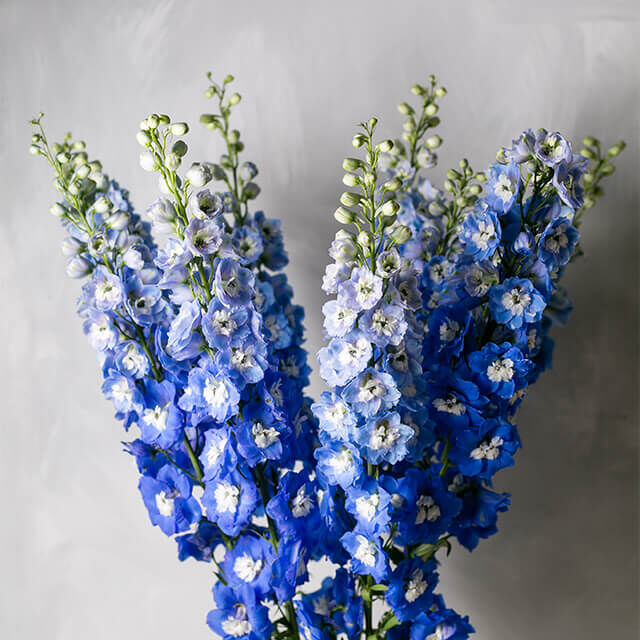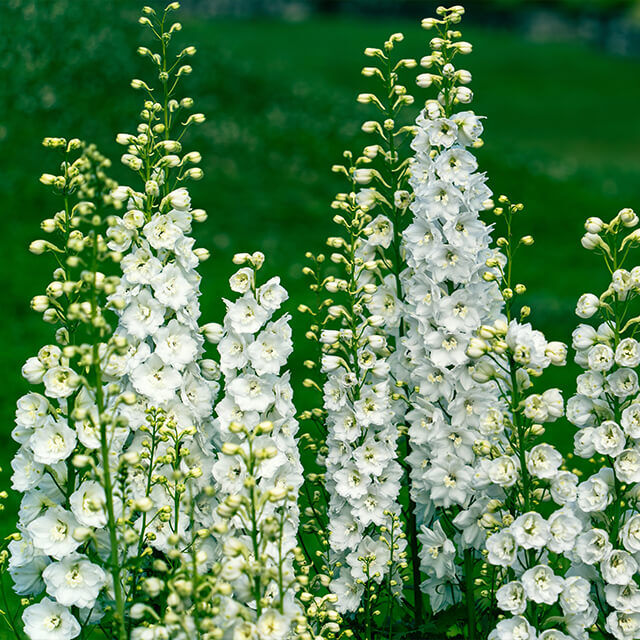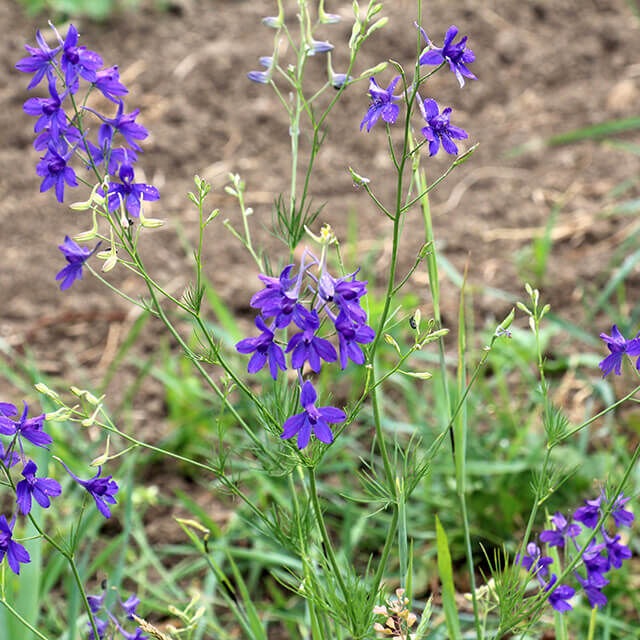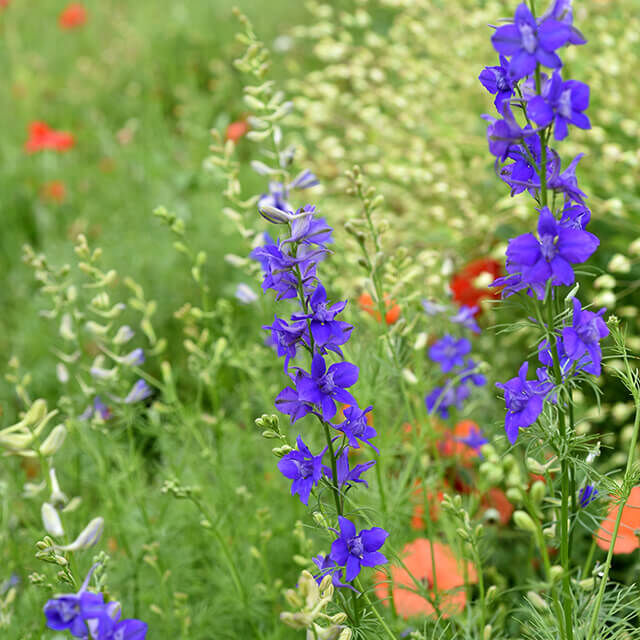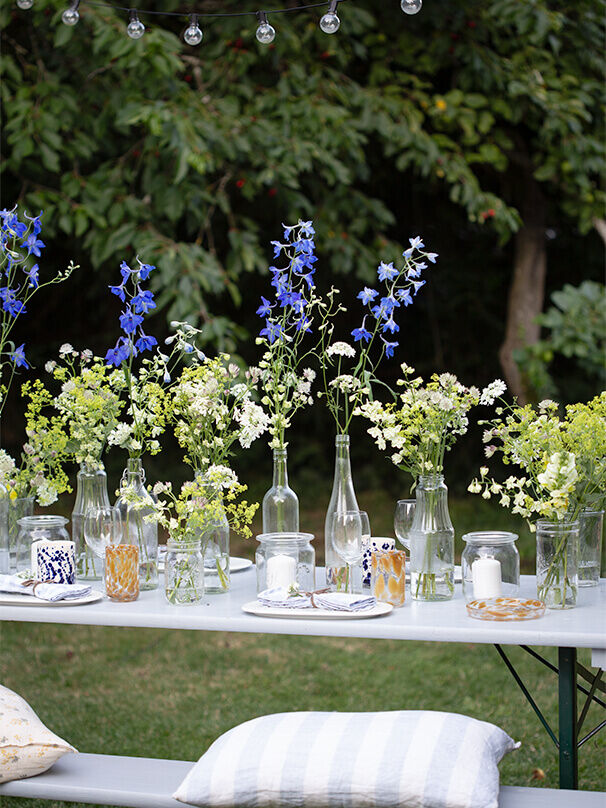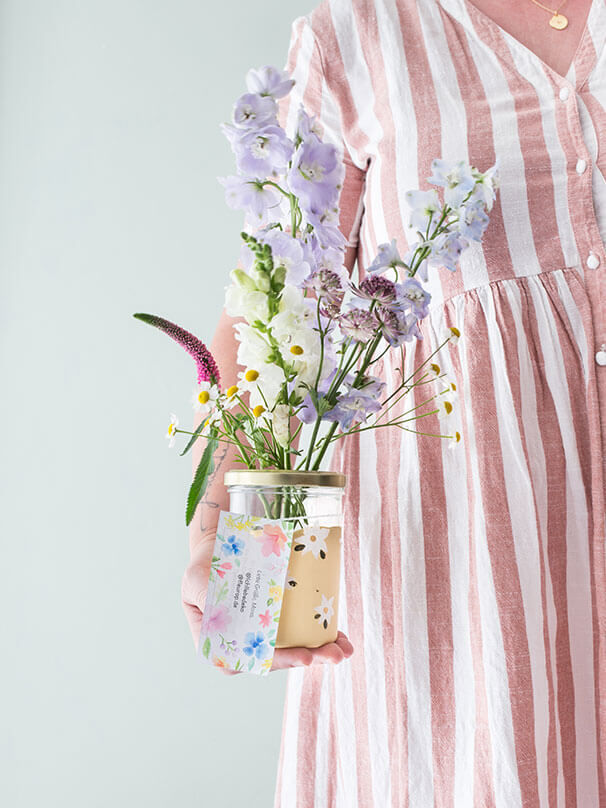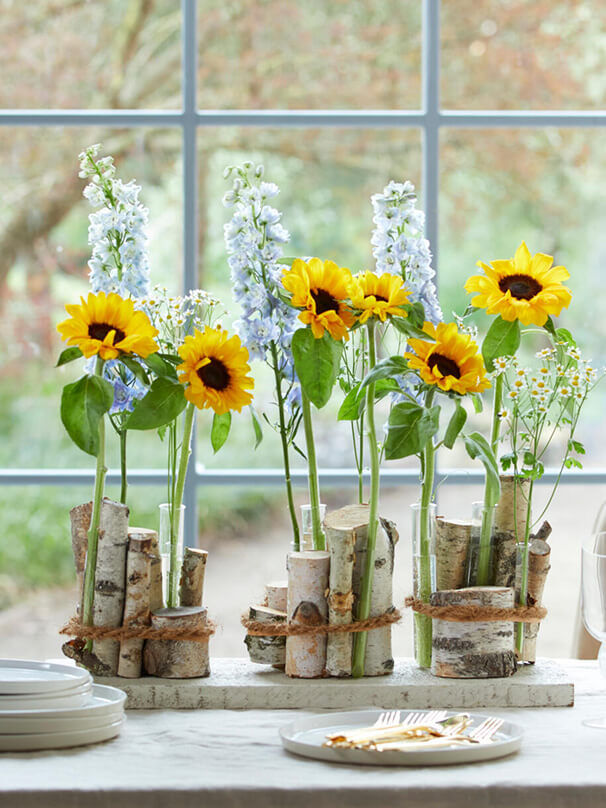Larkspur care & planting
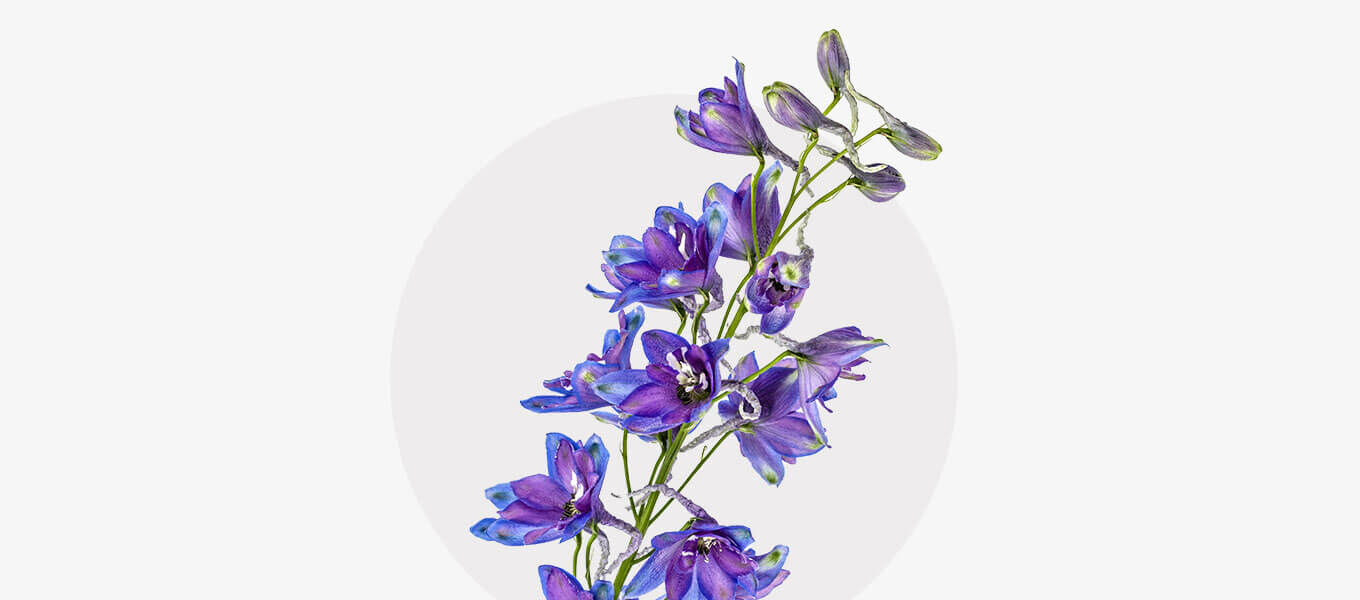
Create colourful accents with delphiniums in beds or containers
The delphinium, also known by its botanical name Delphinium, is an impressive plant that adds a touch of elegance to any garden or balcony. With its magnificent panicles of flowers in a variety of colours, it provides lively accents and is a real feast for the eyes both in beds and containers. But what makes the delphinium so special and how can you best cultivate it in your garden or on your balcony? Find out in this article!
Profile of the delphinium
- Botanical name: Delphinium
- Plant appearance: The delphinium is a striking perennial plant with slender, tall inflorescences consisting of numerous small to medium-sized flowers.
- Growth & height: The tall delphinium reaches an impressive height of up to two metres, although there are also varieties that remain smaller.
- Flower colour: The delphinium's flowers shine in many colours, including blue, white, purple, pink and light blue. The blue delphinium is particularly popular, as this natural colouring is very rare in nature.
- Flowering time: From June to August, the delphinium will delight you with its magnificent flowers.
- Planting time: You should plant the delphinium in spring or autumn when the ground is frost-free.
- Location: Delphiniums prefer a sunny location, but also tolerate semi-shady spots.
- Soil moisture: The soil should be well-drained and slightly moist, without waterlogging. Sandy-loamy soil that is very rich in nutrients would be ideal.
- Toxicity: Yes, the delphinium is poisonous. All parts of the plant contain alkaloids that can be poisonous if eaten.
- Hardiness: The delphinium is hardy and survives cold winters without any problems.
Larkspur care & planting
The delphinium is robust, but good care is crucial to promote lush flowering. The right location is the be-all and end-all. Perennial delphiniums prefer sunny to semi-shady locations and a nutrient-rich, well-drained soil. Waterlogging should be avoided at all costs, otherwise the roots can rot. Regular fertilisation supports growth and promotes flowering. A high-quality complete fertiliser is ideal here.
To keep the delphinium healthy and vigorous, it is important to cut off wilted inflorescences regularly. This allows the plant to use its energy for new flowers and often blooms a second time in late summer.
How do you prune delphiniums correctly?
Pruning is crucial for a second flowering. After the first flowering period is over, you should cut off the faded stems just above the ground. Make sure that you leave strong, healthy leaves so that the plant can continue to absorb nutrients. In autumn, the plant is then cut back completely to just a few centimetres above the ground.
The right location - planting delphiniums
The ideal location for delphiniums is sunny to semi-shady. These perennials thrive particularly well in flower beds, but can also be cultivated in containers. Make sure that the soil is well-drained to prevent waterlogging. If you want to plant the delphinium in a container, we recommend a generous pot so that the plant has enough space.
Delphinium colours
Delphinium species
There are many different types of delphinium, which vary in growth height, flower colour and care requirements. Here are some popular varieties:
- Delphinium belladonna: A lower variety that grows up to 1.2 metres tall and is characterised by its bright blue flowers.
- Delphinium x elatum: This tall delphinium can grow up to two metres tall and has dense panicles of flowers in blue, white and pink.
- Delphinium pacific: This variety also reaches an impressive height and flowers in intense shades of blue and purple.
Delphinium pests and diseases
Unfortunately, the delphinium is susceptible to snails, which particularly like to eat young shoots. Powdery mildew can also attack the perennial delphinium, especially in excessively damp weather or poor air circulation. Regular watering in the morning and avoiding water on the leaves can prevent this. Regular fertilisation can also strengthen the plant and make it more resistant. How much and how often you need to fertilise depends on the variety and the fertiliser. It is usually said that you should fertilise every three weeks, as delphiniums love nutrients.
Delphiniums are wonderful garden perennials that, with the right care, will give years of pleasure. Whether blue, white, pink or light blue delphiniums - each plant adds a colourful accent to your bouquet or flower bed.
What is the cause of light-coloured leaves on delphiniums?
Light-coloured leaves on delphiniums usually indicate a lack of nutrients (especially nitrogen or iron), waterlogging, sunburn or too high a pH value in the soil. Pest infestation or fungal diseases can also be the cause. The plant prefers well-drained, slightly acidic soil and regular, but not excessive, watering. A soil analysis and targeted fertilisation can provide a quick remedy.














